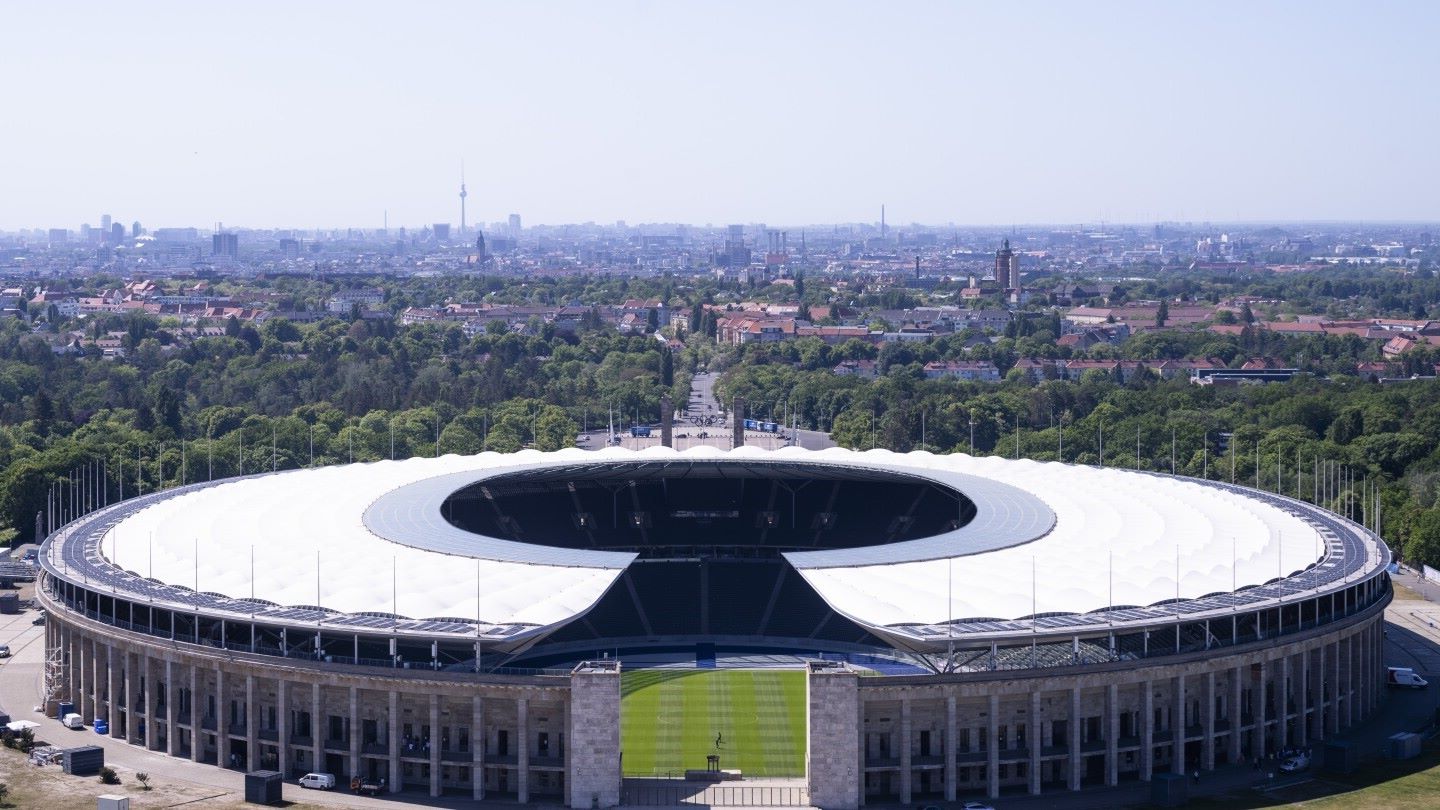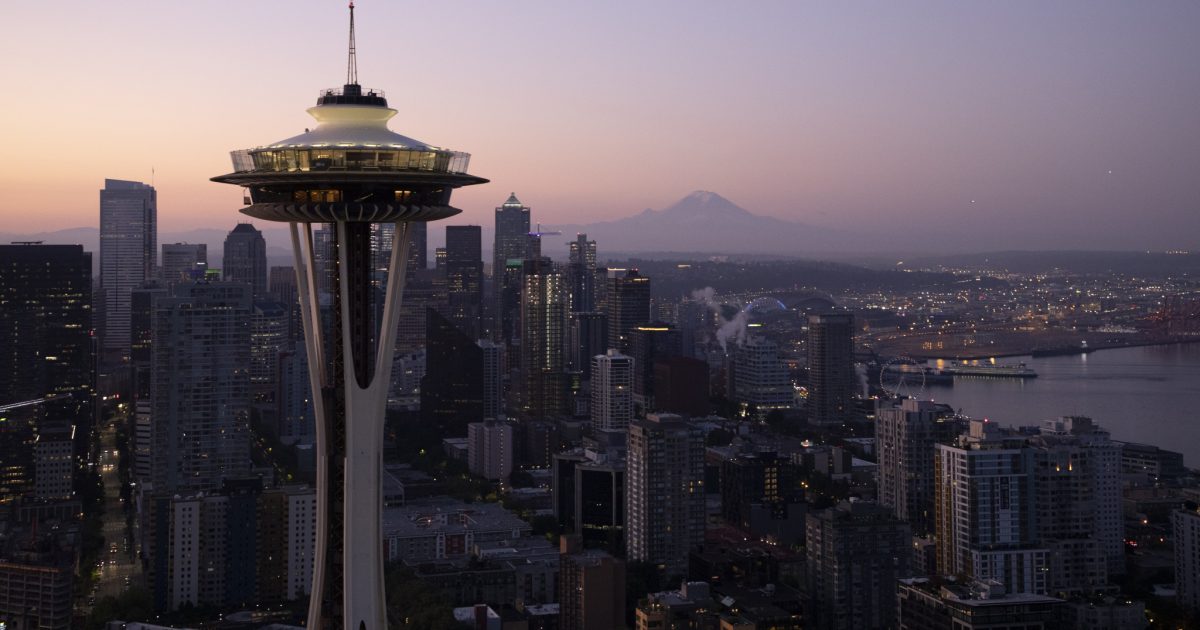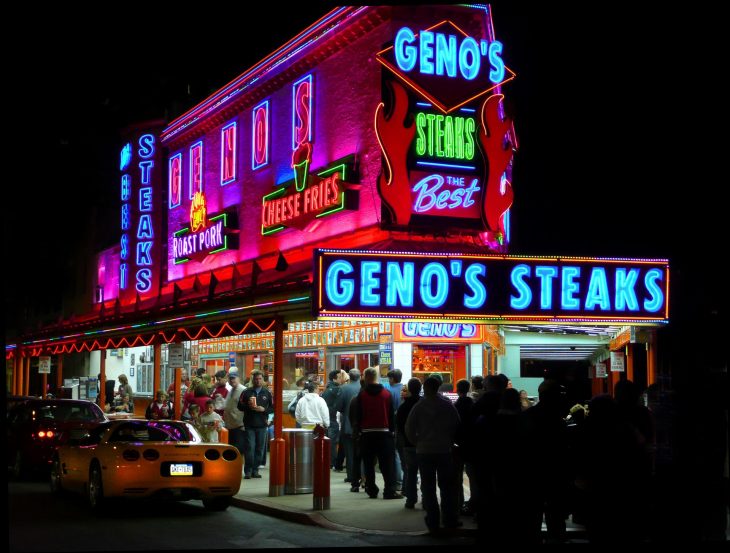
The moment you drive into Pennsylvania, you’ll find signboards welcoming you to the State of Independence. If not for its close history with the 13 Colonies, many people visit Pennsylvania for a good ol’ Philly cheesesteak or to see where Hershey’s began. However, there’s more to this place than its treats and historic sites. Find out more about this state with these interesting Pennsylvania facts.
- Pennsylvania became the second state to join the Union, making it one of the oldest US states.
- The state covers a total area of 119,283 km² of land and water.
- Pennsylvania has a land area of 116.074 km².
- In contrast, water only makes up 3,208 km² of Pennsylvania.
- Based on the 2019 census, there are 110 people for every km² in Pennsylvania.
- Many Native American tribes once lived in what is now Pennsylvania before the colonial era.
- The Dutch and the English began colonizing the region in the 17th Century.
- At that time, they also fought over the region during the Anglo-Dutch Wars.
- Pennsylvania fought against attacking Indians during the 1760s, in the Pontiac’s War.
- Pennsylvania participated in the first meetings of the Thirteen Colonies in the 1760s.
- It was in Philadelphia, Pennsylvania, that the Founding Fathers organized the Continental Congress and signed the Declaration of Independence.
- Pennsylvania stayed loyal to the Union during the American Civil War.
- In 1863, the Union won the Battle of Gettysburg, the turning point of the civil war, in Pennsylvania.
- In the 20th Century, Pennsylvania became a major center of American heavy industry.
- America’s worst nuclear disaster, Three Mile Island, took place in Pennsylvania in 1979.
- Many Native American tribes once lived in what is now Pennsylvania before the colonial era.
- The Dutch and the English began colonizing the region in the 17th Century.
- At that time, they also fought over the region during the Anglo-Dutch Wars.
- Pennsylvania fought against attacking Indians during the 1760s, in the Pontiac’s War.
- Pennsylvania participated in the first meetings of the Thirteen Colonies in the 1760s.
Pennsylvania has a complicated border.
To the southeast, Delaware borders Pennsylvania along the Delaware River. To the south, Maryland borders the state, while West Virginia lies southwest, and Ohio to the west. Across Lake Erie, the Canadian province of Ontario lies from Pennsylvania’s northwest. To its north, New York State faces Pennsylvania, while New Jersey can be found to Pennsylvania’s east.
Pennsylvania is called the Keystone State for many reasons.
Originally, Pennsylvania served as the center of the original Thirteen Colonies. Aside from its location, many of the USA’s most important historical documents were all signed in Pennsylvania. It wasn’t just the Declaration of Independence, for example, but also the original US Constitution.
This has also led to Pennsylvania’s alternative nickname of Independence State. In terms of the economy, the state plays a big role in the industrial economy of the northern states and the agricultural economy of the southern states.
Pennsylvania also has other nicknames with economic roots.
Aside from its usual nicknames, people have also branded Pennsylvania as the Chocolate State, Coal State, Oil State, and Steel State. All of these reflect one each of the Pennsylvanian economy’s most profitable sectors.
Most of Pennsylvania enjoys a temperate climate.
However, Southern Pennsylvania has a subtropical climate with colder winters and hotter summers than the rest of the state. In general, Pennsylvania has cold winters and humid summers. Annual temperatures in the state usually average between 1 to 13°C , with up to 1.04 meters of rain in a year.
The weather can get extreme in Pennsylvania.
One of the little-known Pennsylvania facts is how crazy the weather can get in the state. Western parts of the state can get up to 2 meters of snow in winter, with temperatures possibly dropping to -41°C. In March and April, the entirety of the state commonly experiences flooding. Tornadoes also usually strike in Pennsylvania, with up to 30 moderately-damaging tornadoes developing per year.
As of 2019, 12.8 million people live in the state of Pennsylvania.
Out of Pennsylvania’s population, only 74.5% were actually born in the state. The rest either moved into the state from other states, or from countries outside the USA. Of the latter group, around 36% comes from Asia, with the smallest group of migrants from Oceania at 0.4%.
Pennsylvania has its own dialect of the German language.
Also called Pennsylvania German, the dialect resulted from how 28.5% of Pennsylvanians have German descent. Compared to German as spoken in Germany, it’s closest to the dialect spoken in Germany’s Palatine region. Today, Pennsylvania German is almost an extinct dialect, never used as an everyday language outside of some religious communities in the countryside.
Pennsylvania enjoys a diverse set of religions among its people.
Generally, a majority of people in Pennsylvania practice Christianity, with Protestants and Catholics making up 47% and 24% respectively. Other religions in Pennsylvania include an Islam minority of 0.6%.
Pennsylvania requires all children aged 7 to 17 to attend school.
Alternatively, graduation from any accredited high school will also fulfill the legal requirement, even if the student has yet to reach the age of 17. Today, 83.8% of Pennsylvanians aged 18 to 24 have finished high school. Even more Pennsylvanians aged 25 or older have finished high school, at 86.7%. Of both categories, 27.5% have gone further and earned a bachelor’s degree from college.
Pennsylvania allows parents to home-school their children.
First allowed in 1988, the law still sets down strict rules and requirements for homeschooled children and their parents or guardians to meet. Failing to meet them will result in legal action from the state government. The children may also still have to attend school as a consequence of their home education not meeting the required standards.
George Washington once set up his headquarters in Pennsylvania.
During the American War of Independence from 1777 to 1778, Washington camped the Continental Army in Valley Forge to keep the British Army away from Pennsylvania. By then, the British had taken Philadelphia, forcing the Continental Congress to escape to York. The cold winter made life difficult for the Continental Army in the countryside, but they kept themselves busy training for the next year’s campaigns.
Historians even consider how the Continental Army’s experience at Valley Forge gave them an edge over the British for the rest of the war. Definitely a historic example of Pennsylvania facts to remember.
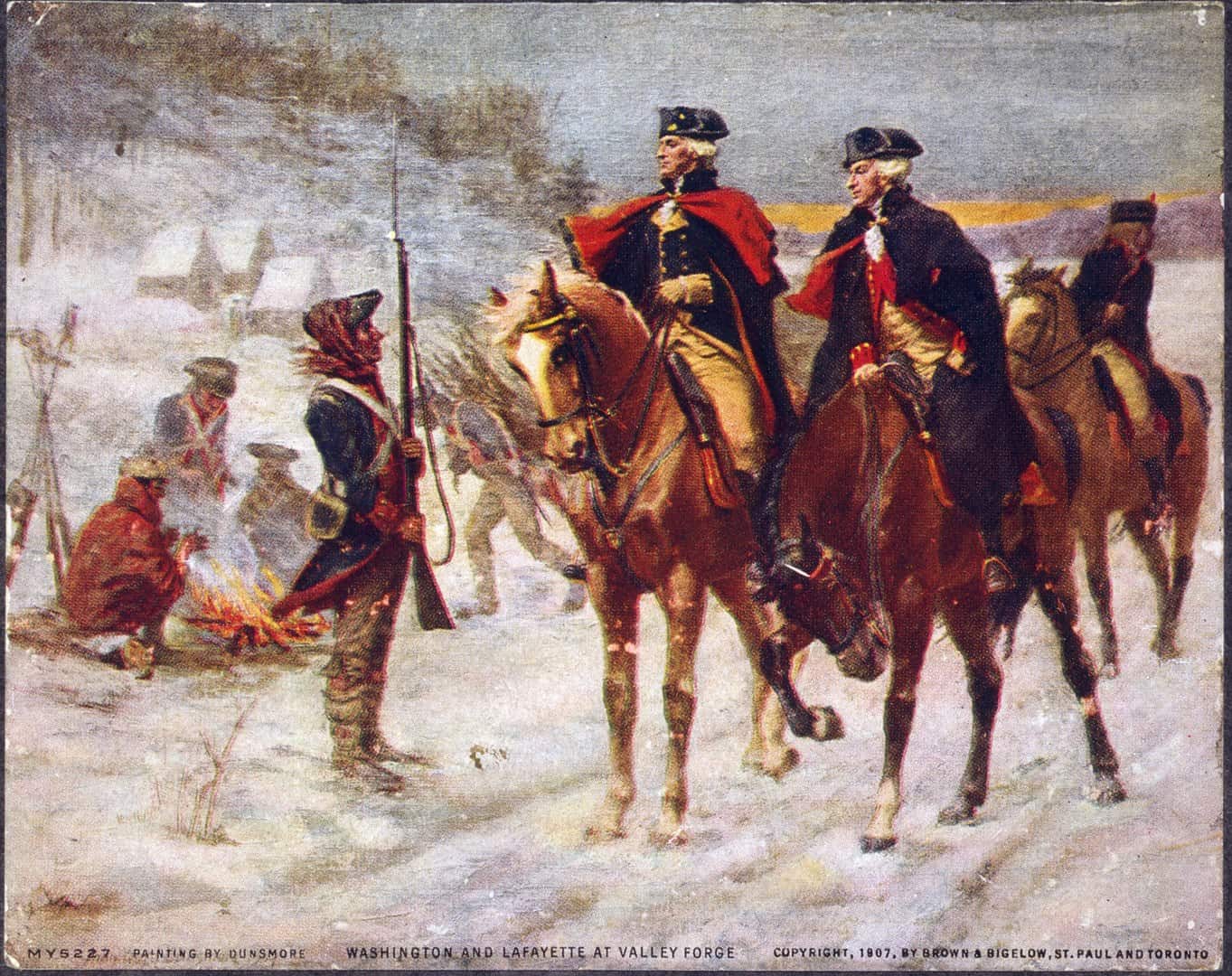
Pennsylvania later declared Valley Forge a state park.
In 1893, Pennsylvania declared Valley Forge as its state park to honor and preserve the place where Washington and the Continental Army took camp during the war. During the USA Bicentennial Anniversary in 1976, Pennsylvania donated the park to the federal government. This led the US Congress to pass an act adding the park to the nation’s list of existing national parks, and which became law with US President Gerald Ford’s signature.
Valley Forge National Park covers 14 km² of land and water.
An estimated 1.2 million people visit the park each year, along with its historical buildings, museums, and places. The park also features 42 km of trails for biking and hiking, as well as other activities like wildlife watching and fishing. The park also offers official tours, either on foot or by vehicles like buses and trolleys.
George Washington’s headquarters is one of the main attractions at Valley Forge National Park.
Originally built in 1773, Washington’s headquarters is a 3-floor brick house with a gabled roof . It survived the passing of the centuries, though it needed rehabilitation by the 21st Century. By 2009, the house and the area completed rehabilitation. In particular, this reconstruction also removed modern roads and other infrastructure for several kilometers. This way, the state restored the natural appearance of the surroundings.
The park also includes restored facilities once used by the Continental Army.
Throughout its premises, Valley Forge features log cabins used by soldiers in the Continental Army while camping. While they’re only reconstructions, these cabins remain accurate to the appearance, furnishing, and methods used by the Continental Army at the time.
Valley Forge also retains 4 forts once used to help defend the camp, along with a trench line and a rebuilt barricade made from trees tied together. A number of buildings like Knox’s Quarters are also present but closed to the public due to damage from age and the elements. How’s that for historic Pennsylvania facts?
A memorial arch stands at Valley Forge.
Commissioned in 1910 by the US Congress, it was finally finished in 1910. The arch stands on the outer defense line of the old camp, where it intersects with Gulph Road. The arch bears a dedication to the officers and men of the Continental Army. Also engraved on its walls is a quote from Washington himself, praising the endurance and fortitude of his army. Additional stone memorials stand next to the arch for each of the brigades encamped at Valley Forge.
Pennsylvania has only one of the USA’s National Forests.
Around 160 km northeast of Pittsburgh, the Allegheny National Forest lies in Pennsylvania’s northwest. Covering an area of 2,077 km², the forest became a national reserve in 1923, under President Calvin Coolridge’s authority. Coolridge declared the forest as a national reserve to maintain the health of the water and air in the Allegheny River Basin.
Significant oil deposits may lie inside the Allegheny National Forest.
The forest stands in the middle of Pennsylvania’s oil country, only 64 km from the USA’s first commercial oil well in Titusville. Today, it’s estimated that around 17% of the state’s oil reserves stay protected from exploitation in the forest’s boundaries.
Only one President of the United States ever came from Pennsylvania.
Serving from 1857 to 1861 as the 15th President of the USA, James Buchanan also hailed from Cove Gap, Pennsylvania. A supporter of states’ rights, he limited the federal government’s stance on slavery, something that many historians think led to the outbreak of the American Civil War. For that reason, they also consider Buchanan one of the worst presidents in American history. Definitely one of the more unfortunate Pennsylvania facts.
Pennsylvania earns an estimated $803 billion every year.
If it were an independent country, Pennsylvania would have the 19th largest economy in the world. With 5.35 million out of its population employed according to 2016 data, the state also has an unemployment value of 13.1%.
Up to 50 Fortune 500 companies call Pennsylvania home.
Many powerful companies consider Pennsylvania home, including H.J. Heinz, P.P.G. Industries, and US Steel among others. A particular example is The Hershey Company, the world’s biggest chocolate company, based in Hershey, Pennsylvania. The USA’s largest train maker, GE Locomotives, also calls Pennsylvania home, specifically in the city of Erie. Now there’s one for impressive Pennsylvania facts.
Pennsylvania has some of the USA’s biggest industrial areas.
In particular, Pennsylvania also has Bethlehem, Erie, Philadelphia, and Pittsburgh in its territory. Bethlehem and Pittsburgh produced the world’s biggest steelmakers. For one, Bethlehem gave birth to Bethlehem Steel, which went bankrupt in 2001, and its assets sold to the International Steel Group. Pittsburgh gave birth to US Steel, which remains the second-largest producer of steel in the USA.

Philadelphia is the biggest city in all of Pennsylvania.
Located in the state’s southeast, Philadelphia boasts a population of 1.6 million. It also serves as a center of the American financial and insurance industries, with companies such as Cigna, Colonial Penn, and Independence Blue Cross. Other major companies that call it home include Boeing and Rohm and Haas.
Philadelphia also has the USA’s oldest zoo.
The state government chartered it in 1859, but the civil war delayed work on the zoo. It finally opened in 1874, with a starting exhibition of 1000 animals. It also worked in cooperation with the Smithsonian Institution, as the National Zoo didn’t exist at the time. In just 2 years after its first opening, 680,000 people would visit the zoo every year. This number stayed steady until 1951 when the number of visitors rose to 858,000.
The Philadelphia Zoo became the first zoo in the world to have its own research lab in 1901.
The lab did studies on any animal that ever died of sickness inside the zoo. They then used the lab’s findings to prevent any more outbreaks of the same disease inside the zoo. This had the effect of improving the health and increasing the lifespans of the zoo’s animals. The success of the Penrose Research Laboratory led other zoos around the world to set up their own research labs.
The Philadelphia Zoo pioneered the idea of breeding in captivity.
The Philadelphia Zoo became the first to breed rare or endangered animals to increase their numbers in the zoo instead of in the wild. This removed the need to locate or catch them to reduce the risk of young animals from dying in the wild. The first orangutan and chimpanzee to ever get born in a zoo were both born at the Philadelphia Zoo in 1928. The first cheetahs born in a zoo were also born in the Philadelphia Zoo in 1956, then an echidna in 1983, and most recently a giant river otter in 2004.
The Zoo360 is the latest innovation of the Philadelphia Zoo.
Made up of 5 networks of suspended and ground-level meshwork, this new structure allows certain animals to safely go around the zoo. The Philadelphia groups the animals according to networks such as the Big Cat Crossing, Gorilla Treeway, Great Ape Trail, the Meerkat Maze, and the Treetop Trail.
The Philadelphia Zoo also includes a special center for endangered species.
Instead of living exhibits, the Rare Animal Conservation Center uses interactive graphics and HD closeup photos. This allows the zoo to exhibit especially-endangered species to visitors without needing to take them from their natural habitats or put them in any danger that could result from human exposure.
The exhibit features species nearing extinction, such as the blue-eyed black lemur, naked mole-rats, and golden lion-tamarins, among others. This is definitely one of the more promising Pennsylvania facts.
Several extinct birds are also in the Philadelphia Zoo.
The Philadelphia Zoo also offers refuge for species that no longer exist in the wild. This includes birds such as the Guam kingfisher and rail, which both live in the McNeil Avian Center. They share the said aviary with a variety of birds from Africa and the Pacificm such as the hamerkop and the Mariana fruit dove.
The American oil industry started in Pennsylvania.
In 1859, Edwin Drake drilled the first commercial oil well in history at Titusville, Pennsylvania. This achievement directly led to the booming growth of the American oil industry, even with the outbreak of the American Civil War soon after. How’s that for historical Pennsylvania Facts?
Pennsylvania is also home to the USA’s first nationally-chartered bank.
That was the Bank of North America, founded in Philadelphia in 1781. Over the following centuries, it merged with other banks. Today, it is one of many banks that make up Wells Fargo & Company.
Pennsylvania also has a large agricultural industry.
A large part of the state remains a rural area, which stands in sharp contrast to the state’s industrially-developed areas. It also affects Pennsylvanian politics, as politicians must balance industrial interests with agricultural ones in order to win votes.
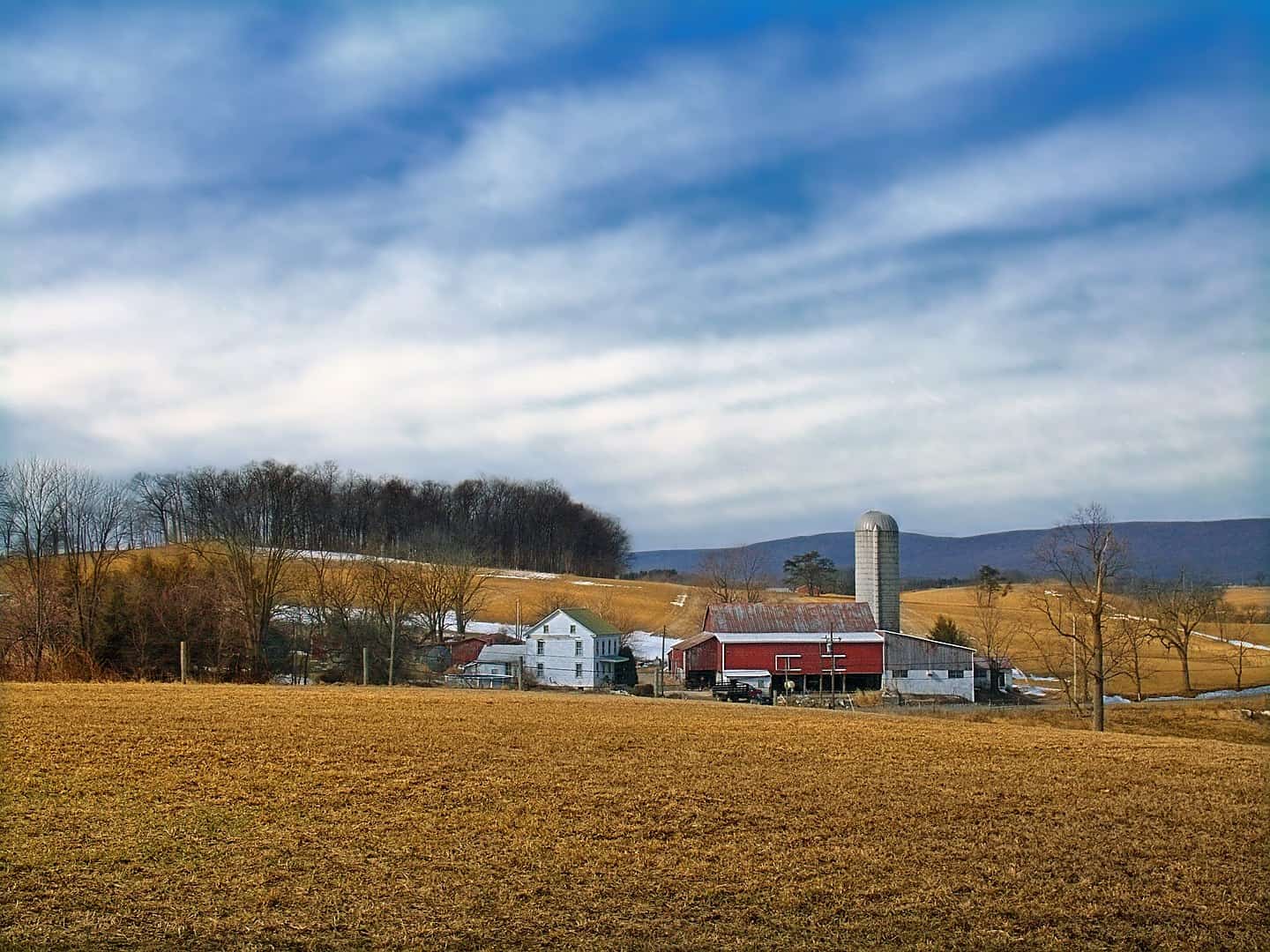
Pennsylvania’s biggest agricultural product is mushrooms.
Pennsylvanian mushrooms actually make up 63.8% of all mushrooms sold in the USA. Trailing after mushroom farming is the apple industry, then eggs, and corn feed for animals. Pennsylvania also produces trees for use as Christmas trees, as well as grass for gardening and landscaping.
Aside from these resources, Pennsylvania also mainly exports nursery trees, juice grapes, and winemaking grapes. This is one of the Pennsylvania facts that show its close ties with agriculture.
Gambling was once illegal in Pennsylvania.
It was only until 2004 that Pennsylvania legalized certain gambling activities. Specifically, Pennsylvania only allows betting for electronic table games, horse racing, and slot machines. Later on, table games like poker and blackjack became legal in 2009. As of today, there are 9 casinos across the state, with 3 more under construction.
Hunting is completely legal in Pennsylvania.
So much so, that there are nearly a million registered hunters from all over the state. Common sports for hunters in Pennsylvania include bears, deer, rabbits, squirrels, and even turkeys. In fact, turkey hunting is so common in Pennsylvania that only Texas and Alabama can compete when it comes to the sport.
Pennsylvania has many professional sports teams of its own.
For baseball alone, Pennsylvania has two official teams: the Philadelphia Phillies and the Pittsburgh Pirates. The Philadelphia 79ers who compete in the NBA also come from Pennsylvania. For American football, Pennsylvania also has 2 professional teams: the Pittsburgh Steelers and Philadelphia Eagles. Other sports that Pennsylvania has professional teams for include hockey and soccer.
College sports are very popular in Pennsylvania.
Among Pennsylvania’s colleges, 3 compete in the NCAA Division I Football Bowl Subdivision. Another 5 universities, the so-called Big 5, compete in NCAA Division I Basketball.
Arnold Palmer came from Pennsylvania.
Arnold Palmer was one of the greatest golf players in history. Born in 1929, he began his career in 1955 with the PGA Tour, today the PGA Tour Champions. Nicknamed The King, he became one of the first television superstars in the 1960s. Over the course of the 60 years of his career, Palmer won 62 PGA Tour titles. And together with fellow golfers Jack Nicklaus and Gary Player, Palmer helped golf succeed in becoming a professional sport worldwide.
Racing is a major sport in Pennsylvania.
The state has plenty of professional racetracks, such as the Jennerstown Speedway in Jennerstown, the Lake Erie Speedway in North East, and the Lernerville Speedway in Sarver, among others. In the past, the Pocono Raceway in Long Pond even hosted 2 NASCAR Cup Series races and one IndyCar Series race. There’s also Maple Grove Raceway near Reading, which hosts annual races for the National Hot Rod Association.
Pennsylvania also has racetracks for horses.
Pennsylvania’s many horse tracks include The Meadows near Pittsburgh, Harrah’s Philadelphia in Chester, and Penn National Race Course in Grantville among others. In particular, Harrah’s Philadelphia has the distinction of including harness racing among its attractions. Similarly, Presque Isle Downs near Erie has a global reputation for its thoroughbred racing events.
Famous racer Mario Andretti comes from Pennsylvania.
Mario Andretti made a name for himself as one of the only two racers to win the Formula One, IndyCar, NASCAR, and World Sportscar Championship in history. He’s also the only racer to ever win races in the Indianapolis 500, Daytona 500, and Formula One World Championship.
In fact, no American has ever won at Formula One since Andretti finished first for the 1978 Dutch Grand Prix. With his victory in the 1993 IndyCar, he also became the first racer to have won IndyCar races over 4 decades.

Pennsylvania is often considered as the snack food capital in the world.
In the USA alone, no other state makes as many pretzels and potato chips as Pennsylvania. Two of America’s biggest potato chip companies are based in Pennsylvania, with Utz Quality Foods in Hanover and Wise Foods in Berwick. Other major snack companies based in Pennsylvania include Herr’s Snacks and Snyder’s of Berlin, among others.
The American chocolate industry also started in Pennsylvania.
While The Hershey Company remains as Pennsylvania’s pride, the state also served as the beginning for Mars, Godiva, and the Wilbur Chocolate Company. Other smaller companies include Asher’s, Just Born, and Mike and Ikes. They also make Peeps marshmallows, popular in both the USA and Canada for Easter holidays.
Pretzels first came to America in Pennsylvania.
In 1861, the first pretzels made it to America with the founding of the Sturgis Pretzel House in Lititz, Pennsylvania. According to the legend, Julius Sturgis was a baker who once fed a homeless man. In return, the homeless man gave him a recipe for pretzels. He first had his family try the pretzels, then adding them to his bakery’s menu to great success.
Today, the Sturgis family continues to own the Sturgis Pretzel House, using the same recipe used by Julius Sturgis. Though they’ve opened other branches, they also continue to operate the same pretzel bakery that their family started with. How’s that for tasty examples of Pennsylvania facts?
America’s oldest commercial brewery is also in Pennsylvania.
Despite what the name might suggest, D.G. Yuengling, is not Chinese, but German. Yuengling actually comes from Jungling, after its founder, David Gottlieb Jungling. In 1829, Jungling founded what he called the Eagle Brewery in Pottsville, Pennsylvania. He later renamed it D.G. Yuengling and Son after his son joined him in running the business. Today, the Yuengling family continues to own their brewing company, and make an estimated 2.9 million barrels of beer in a single year.
Pennsylvanian cuisine is heavily influenced by German cuisine.
Examples of traditional Pennsylvania food include schnitz un kepp, made from dried apples, ham, dumplings. There’s also fasnachts, which literally translates to raised doughnuts. Other German-inspired treats include scrapple, pretzels, and chow-chow. Potato bread is also another example of traditional Pennsylvanian cuisine.
Cheesesteaks are another popular dish coming from Pennsylvania.
Specifically, it comes from the city of Philadelphia in Pennsylvania. Traditionally, this savory dish uses ribeye or top round beef that is thinly-sliced before getting browned and scrambled at medium temperature. A hoagie roll is then sliced open, with the meat placed inside with plenty of melted cheese. Essentially, this is where the name ‘cheesesteak’ comes from.
The Heater is a special variant of the cheesesteak.
In Pennsylvania, locals commonly serve this during games with the Philadelphia Phillies. The name comes from the extra spiciness characteristic of the variant, which uses toppings such as Buffalo sauce, jalapenos, and jalapeno cheddar.
Irish potato candy comes from Pennsylvania.
Don’t let the name fool you – this recipe is 100% American. Not only that, but the dish doesn’t have any potatoes at all. Instead, it’s made from coconut cream, blended from coconut, confectioner’s sugar, cream or cream cheese, and vanilla. It’s then rolled with cinnamon on the outside, which makes it look like a potato. They’re especially popular on St. Patrick’s Day, and together with its appearance, is where the name comes from. How’s that for interesting Pennsylvania facts?
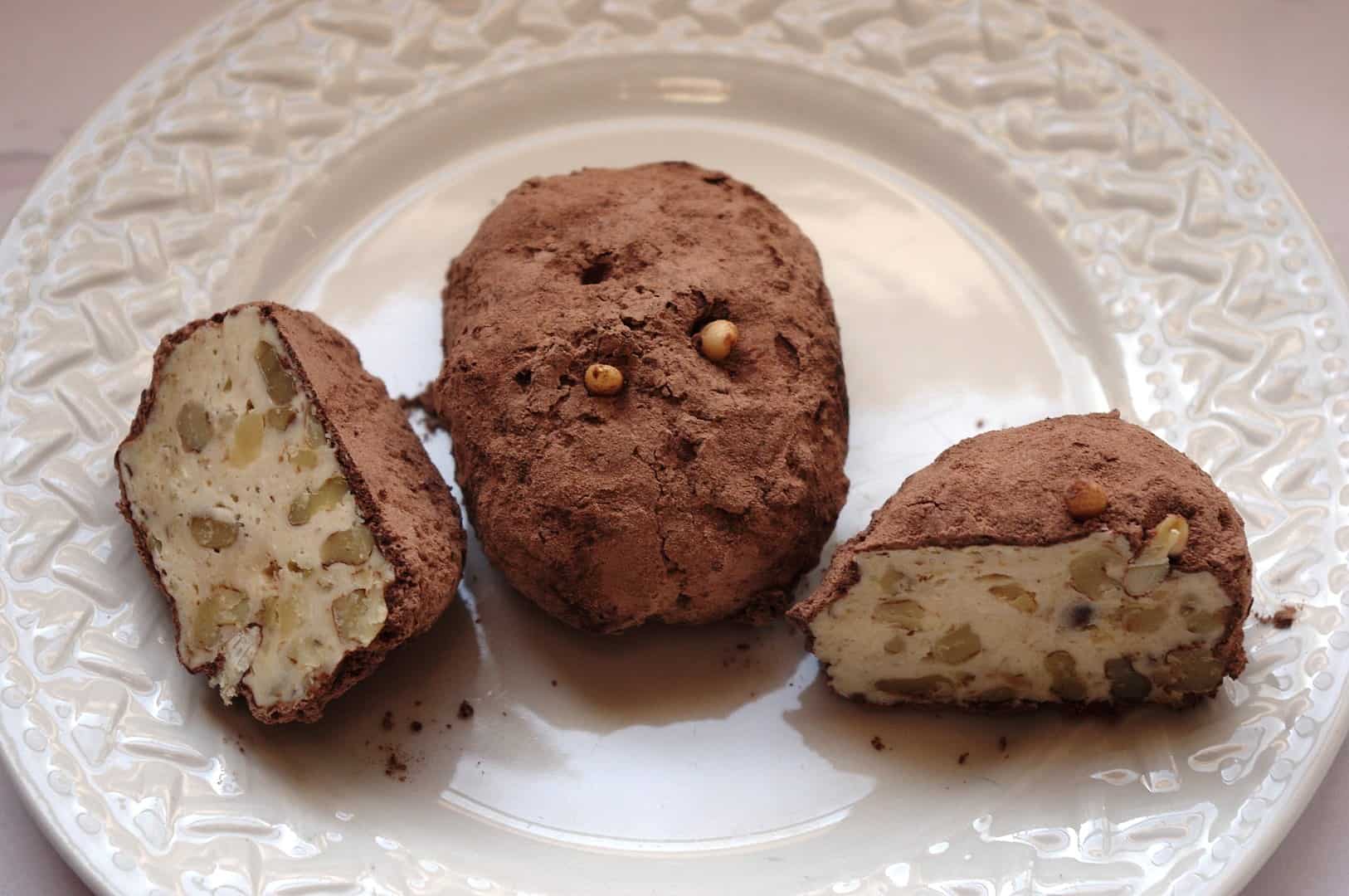
Chocolate can also substitute for cinnamon in Irish potato candies.
For some versions of the recipe, the candy mixture would be rolled in cocoa instead of cinammon. It also gives the candy a darker appearance, while removing the slight bite of cinnamon spice. This variant of the candy also sometimes leaves out the coconut, or dips the candy mixture in chocolate beforehand.
Shoofly pie is another popular sweet that comes from Pennsylvania.
First made in the 1880s, this pie uses molasses and is traditionally eaten with strong black coffee. The dish is actually a crumb cake baked with a pie bottom, in order to allow diners to securely hold their slice by hand. It also has a dry and wet variety, with the dry variety having a cakey consistency, while the wet variety has a gooey consistency. Definitely one of the Pennsylvania facts you’d want to taste for yourself.
Heinz Tomato Ketchup also comes from Pennsylvania.
It was first sold in 1876 as catsup, in the city of Philadelphia in Pennsylvania. Starting in 1906, all preservatives in the recipe were completely removed, and by 1907, the brand was selling 17 million bottles of ketchup worldwide. By 2012, that number had risen to 650 million bottles, with Heinz proudly advertising itself as America’s favorite ketchup to this day. This is no exaggeration, considering Heinz owns 60% of the ketchup market in the USA, and even more of the European ketchup market, at 80%.
Heinz Tomato Ketchup has several varieties.
The most common are the organic and ‘Simply Heinz’ varieties, which use natural sugar instead of fructose syrup. Other varieties sold worldwide include jalapeno, sriracha, and even vinegar-flavored ketchup.
A variant of Heinz Tomato Ketchup has the name Mayochup.
The name comes from mayonnaise and ketchup and was only launched in 2018. The launch was in response to a question by the company online if customers wanted an official mix of the 2 sauces. The 500,000 yes votes led to the company’s decision to officially introduce mayochup in September 2018.
Mayomust and Mayocue followed Mayochup.
As the name suggests, Mayomust combines mayonnaise and mustard into a new condiment. Similarly, mayocue combines mayonnaise and barbeque sauce. Both launched in March 2019 and were soon followed in April by Kranch, a mix of ketchup and ranch dressing.
There’s an easy way to get Heinz Tomato Ketchup out of its bottle.
The usual way is to just shake the bottle until the sauce flows freely. Officially, though, the company suggests that customers tap the glass next to the number 57. The vibrations will cause the ketchup’s thickness to lessen, and make it pour smoothly. This is only for glass bottles, of course.
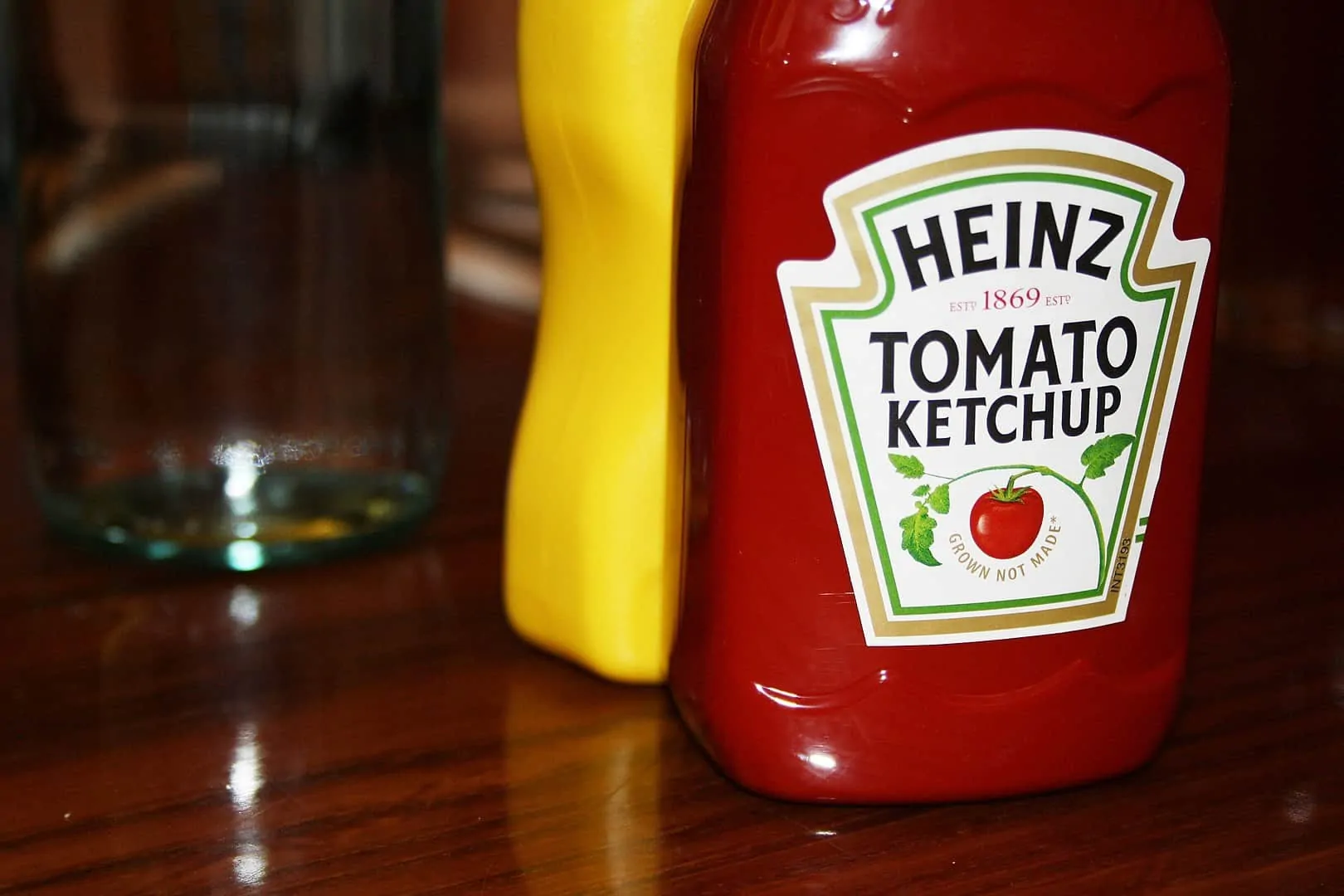
Criminals once tried to sell fake Heinz Tomato Ketchup.
This happened in 2012, and they actually managed to match the appearance of genuine Heinz bottles and labels. They then filled them with repackaged ketchup, but their scheme failed when the ketchup began to ferment. Worse, the gas produced by the fermenting process caused the bottles to explode, further exposing their scheme.
Was this page helpful?
Our commitment to delivering trustworthy and engaging content is at the heart of what we do. Each fact on our site is contributed by real users like you, bringing a wealth of diverse insights and information. To ensure the highest standards of accuracy and reliability, our dedicated editors meticulously review each submission. This process guarantees that the facts we share are not only fascinating but also credible. Trust in our commitment to quality and authenticity as you explore and learn with us.

